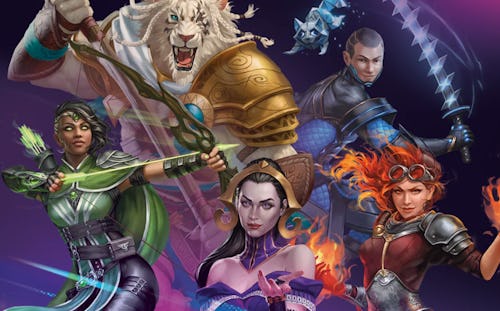
On Friday, Oct. 25, at a special event in Las Vegas, Magic: The Gathering publisher Wizards of the Coast unveiled a slew of new products coming in 2025. The list includes a racing-inspired set and another that returns to the dragon-dominated world of Tarkir for the first time in a decade, along with upcoming crossovers featuring the Final Fantasy video game franchise, Marvel’s Spider-Man, and SpongeBob SquarePants (yes, seriously). In other words: A lot is happening in Magic right now.
With its constant new releases and complicated rules, Magic can be overwhelming at times, even to players who are already deep into the game. The barrier to entry for newcomers often feels insurmountable. But now, Wizards is rolling out a set designed specifically for people who’ve never played Magic: The Gathering before, called Foundations. I got to check it out, and it surprised me in a few exciting ways. The experience brought me back to my earliest days with the game while also revealing an unexpected vision for the future of MtG.
Inside the (Beginner) Box
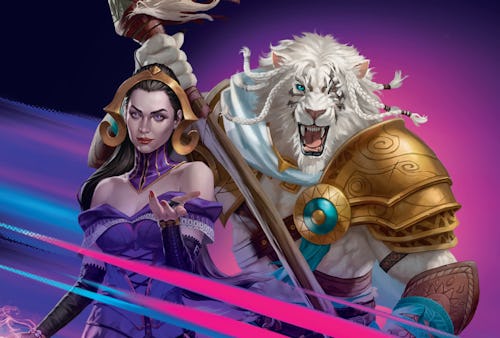
Wizards sent me the Beginner Box, which contains 10 20-card decks. Each deck consists of 20 cards (including one rare creature) and is focused on a single color and concept. For example, there’s a black “Undead” deck full of zombies and skeletons, and a red “Goblin” deck full of, well, goblins.
Out of the 10 decks, two of them (“Vampires” and “Cats”) are designed to be played straight out of the box. Wizards has carefully organized the cards in those two decks for an optimal game. (You’ll start with the right amount of lands and creatures to play on your first few turns.) The Beginner Box also includes a pair of manuals that guide new players through their first game with the vampire and cat decks. Basically, these two decks are designed to teach a new player the basics of Magic: The Gathering before inviting them to level up slightly.
That also means a focus on certain mechanics over others. There are lots of classic abilities like Trample and First Strike but fewer of the more complicated concepts that we typically see in each new magic set (like Delirium, for example). Magic: The Gathering senior game designer Carmen Klomparens tells Inverse that this was an intentional choice meant not only to ease players into the game but to teach them some basic best practices.
“It was important to us that the mechanics helped players ‘get their sea legs’ when learning how Magic feels in their first few games,” Klomparens says. “In this case, that meant leaning into mechanics that keyed off of organic game actions (changes in life total, land drops, et cetera) as a signaling tool for the nuts and bolts of Magic in a way that didn’t feel too much like cards that were simply an extension of the rule book.”
“Raid teaches you that you should be looking for opportunities to attack.”
She points to two mechanics, Landfall and Raid, as good examples of how Foundations is subtly teaching you how to be a better Magic player.
“Raid teaches you that you should be looking for opportunities to attack,” Klomparens says, “and it’s generally better to cast your creatures in your postcombat main phase.” Meanwhile, Landfall helps curb a classic bad habit in MtG: not putting enough land cards in your deck. “Having cards that reward you for drawing an extra land or two will help players find out solutions for how to use lands instead of just cutting them for more spells.”
One type of card that’s notably missing from the Beginner Box is Planeswalkers, though you’ll find a few in the wider Foundations set.
“The Beginner Box is meant to give players the base-level foundation for their first few games of Magic and be a bit lighter in complexity,” Klomparens explains. “Planeswalkers have enough special rules to them that it felt like it was more distracting in those first few games than it was important for players to have every detail of what could happen in a game of Magic deluged upon them.”
The Elves Deck
Here’s a look at all the cards in the Beginner Box “Elves” deck (not counting the basic lands).
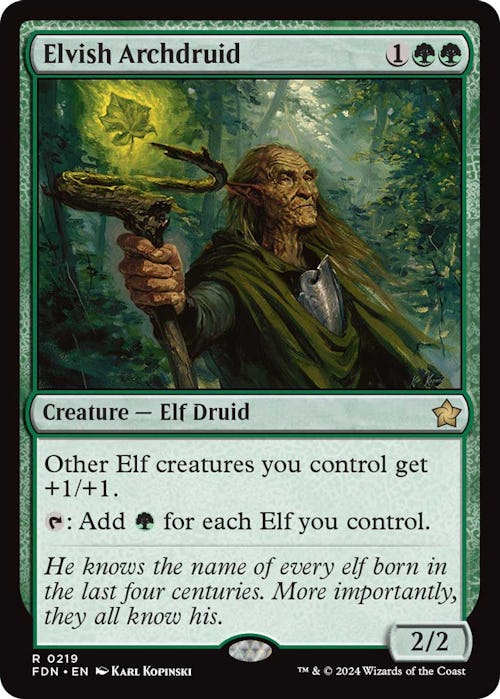
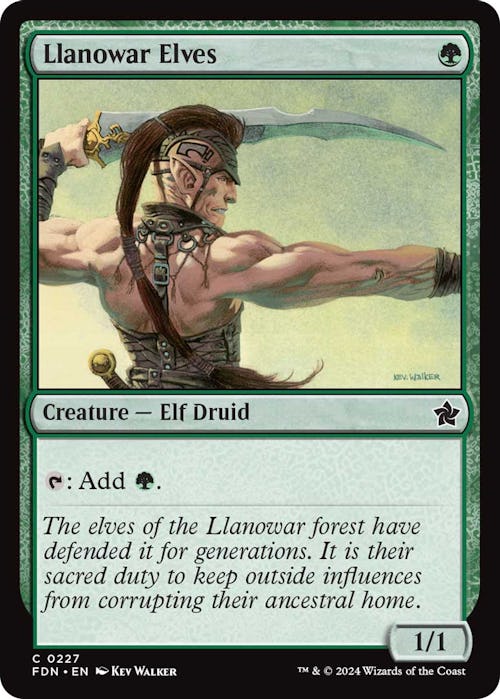

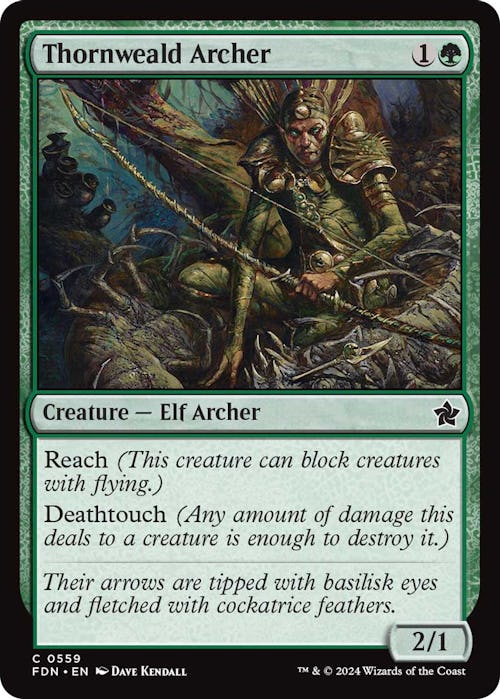
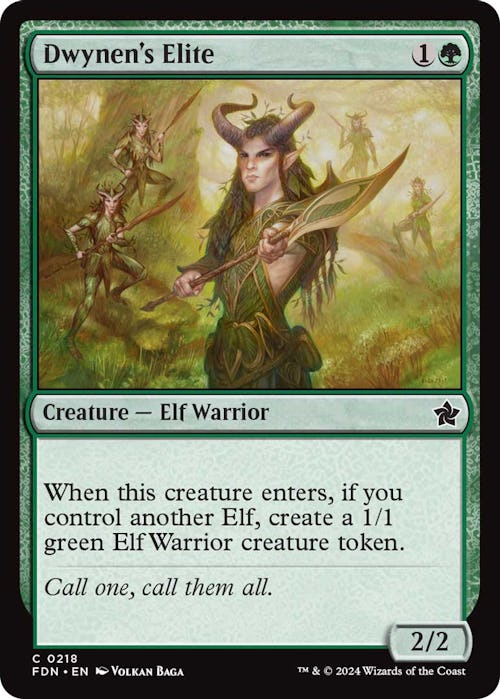
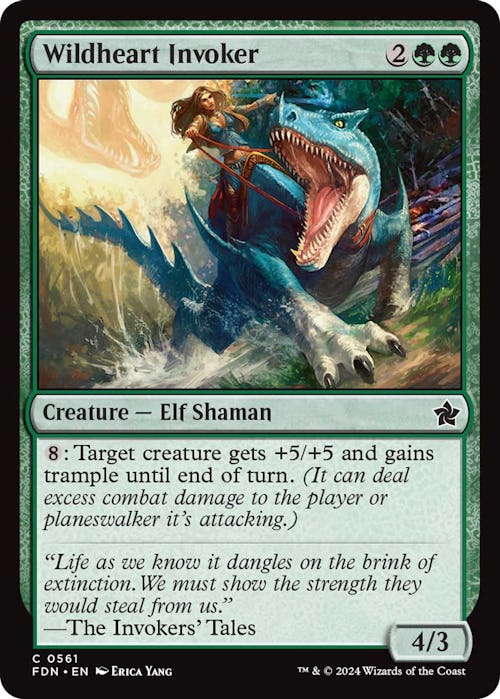
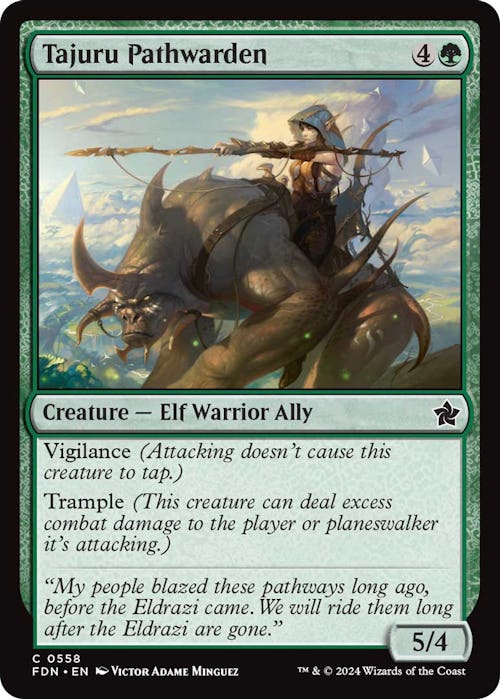
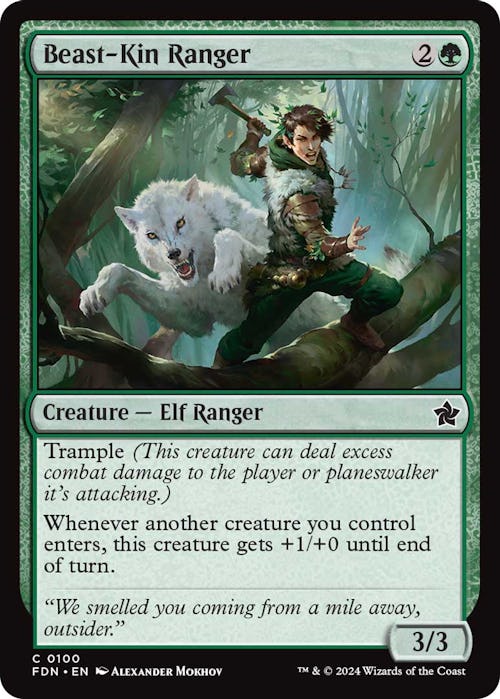
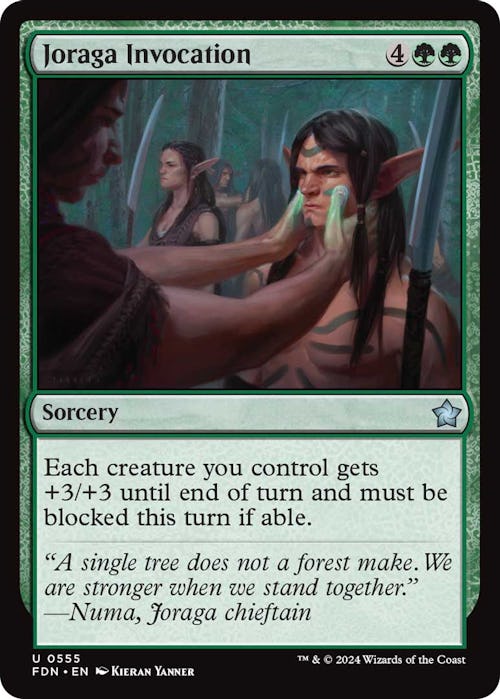

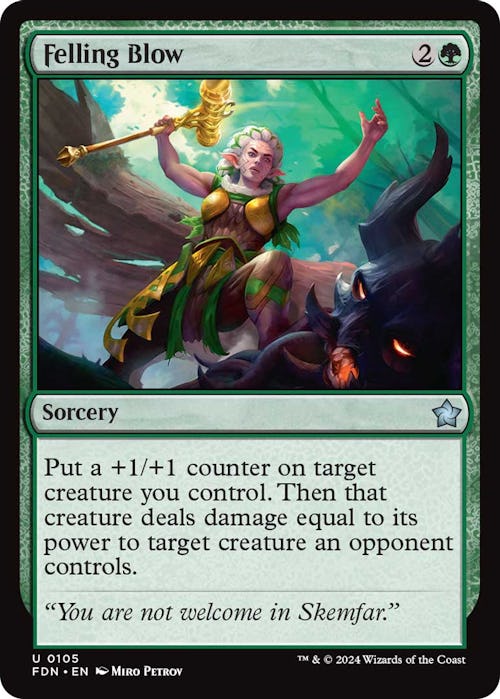
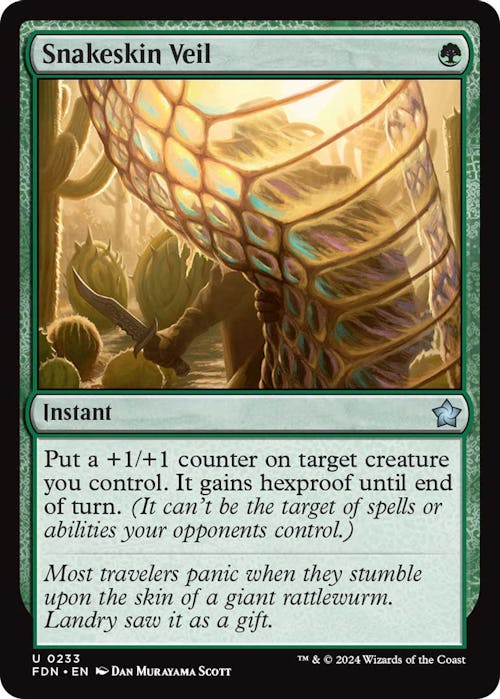
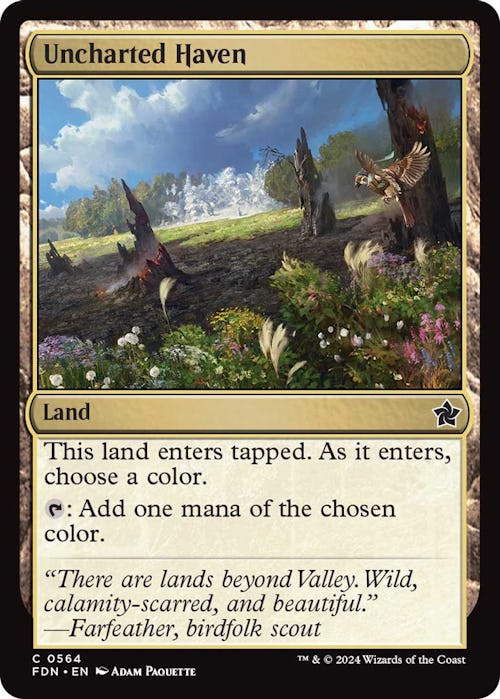
Of the eight remaining decks, Wizards gave me an exclusive on Elves, so I can reveal the cards in the deck in this article. It’s a pretty standard 20-card deck, featuring a mix of elves with varying abilities.
In a fun coincidence, I actually had an elves deck back when I first started playing Magic in the early 2000s. Back then, the deck was built around the card Elvish Champion from the September 2000 set Invasion. That card had a similar buff ability, though the main goal of my white-green elf deck was to pump up a couple of elves by enchanting them with cards like Armadillo Clock or Serra’s Embrace.
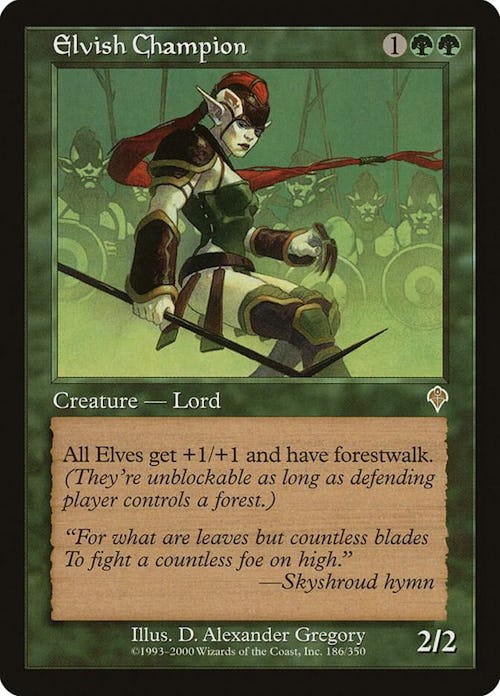
It was a fun throwback to be playing elves again, and this 20-card deck has some fun tricks. Thornweald Archer is a powerful blocker thanks to the combo of Reach and Deathtouch, while Elvish Regrower is a brand-new creature that lets you bring back a card from your graveyard.
“Green cards will frequently return permanent cards from the graveyard to the hand,” Klomparens says, “and so much of this set is about expectation setting that we wanted to make a new card here doing it in the most ‘basic’ way to give players an expectation of the baseline, so it’s easier to engage with the versions of this effect with the frills that they’ll see in our tentpole booster releases or Commander decks.”
“Finding these iconic reprints to seed throughout the product suite was something we put a lot of effort into.”
Leading the Elves deck is Elvish Archdruid, who buffs all your elves (just like Elvish Champion). While Wizards had several different elf options to choose from for the deck’s rare creature, the team ultimately landed on this one.
“In a lot of ways, we wanted cards to feel like ‘the elf-y-est elf’ in order to show players what elves look like in Magic, and Archdriud in particular is a classic card that’s stood the test of time and is beloved by many different levels of players,” says Klomparens. “Finding these iconic reprints to seed throughout the product suite was something we put a lot of effort into because they create opportunities for new players to have a shared affection for cards with veterans of the game, and that’s ultimately the thing we want Foundations to do — bridge the gap between ‘new Magic player’ and simply ‘Magic player.’”
Foundations With Friends
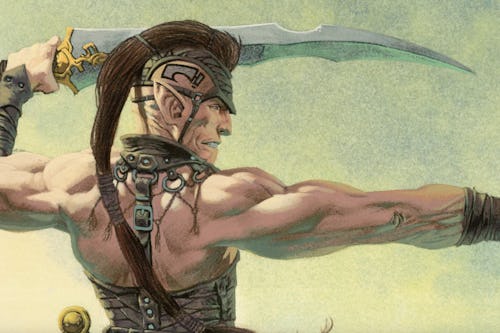
I brought the Beginner Box to my Friday night Commander session, and we ended up playing with it all night. We ignored the Cats and Vampires decks (I want to save those for a true beginner) and instead followed Wizards’ instructions by combining any two others to create a 40-card deck.
With 10 decks to choose from, there’s a ton of variation here if you’re mixing and matching with each new game. You can go from a goblin-elves deck to dragons-wizards to zombies-cats. It was fun to test out different combos and see what worked best. (My favorite is probably Primal, a green deck full of big trample-y monsters, combined with pirates.)
At the end of the night, my friends and I agreed that it was a well-designed set of cards with just enough complexity to keep things interesting. I’m also into the whole mix-and-match concept, which might just have a future as a Magic format beyond Foundations.
“That is absolutely the intent for having a bunch of different ‘half-deck’ packets in the box,” Klomparens says. “The fact that it can sit on a shelf and even give Magic an almost board-game-esque identity is something that we’ll hope makes Magic more approachable to people who might want to engage with Magic in a way that’s a bit lighter than has previously been possible.”
FTTT
0 Comments